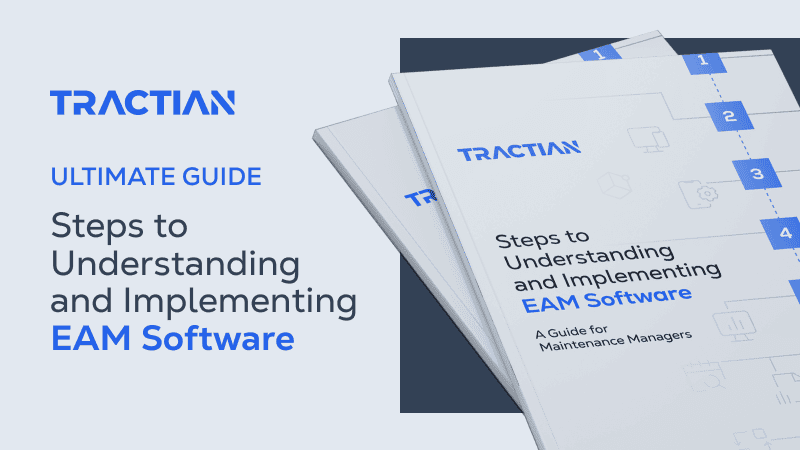Effectively managing your organization's assets is critical for maintaining operational efficiency and controlling costs. Asset inventory management goes beyond just tracking the movement of items; it involves monitoring the condition, location, and utilization of valuable resources.
By implementing the right tools and strategies, businesses can optimize asset usage, extend equipment lifespan, and make data-driven decisions that support long-term growth. In this guide, we’ll explore the essentials of an asset inventory program and the best practices to streamline your processes.
What is Asset Inventory Management?
Asset inventory management is the systematic process of tracking and maintaining a company’s internal resources-such as machinery, vehicles, and software-that support daily operations.
Unlike traditional inventory management, asset inventory management focuses on optimizing the usage, location, and condition of assets to improve operational efficiency.
It helps businesses prevent asset loss, ensure proper maintenance, and plan for upgrades or replacements, ultimately supporting long-term growth and cost control.
Asset Management vs. Inventory Management
Asset management and inventory management are distinct processes, each serving a unique purpose within an organization. Asset management focuses on tracking, maintaining, and optimizing a company’s internal resources, such as machinery and equipment, throughout their lifecycle. It ensures assets are regularly inspected, repaired, and utilized efficiently.
On the other hand, inventory management deals with managing items intended for sale or production, such as raw materials and finished goods. While asset management monitors tools for running the business, inventory management tracks goods that flow through the business.

Asset inventory management bridges the gap between asset management and inventory management by providing a unified view of a company’s internal resources. This system enables organizations to keep track of both physical and digital assets, including their location, condition, and usage, throughout their lifecycle.
Unlike regular inventory management, which monitors products for sale or production, asset inventory management focuses on ensuring that essential resources are available, well-maintained, and effectively utilized to support daily operations and business growth.
Why is Asset Inventory Management Essential?

- Improved Operational Efficiency: Accurate asset tracking prevents over-purchasing, reduces downtime, and enables better maintenance scheduling, leading to smoother operations.
- Cost Control and Asset Utilization: Proper management ensures optimal use of assets, reducing unnecessary costs and extending asset lifespans.
- Accurate Asset Valuation and Depreciation: Tracking asset value and depreciation aids financial planning, optimizes tax benefits, and reflects accurate expenses during each fiscal period.
- Compliance and Risk Management: Maintain accurate records to meet regulatory requirements and avoid compliance-related risks.
- Enhanced Decision Making: Provide data-driven insights for better asset utilization, replacement planning, and budget allocation.
Key Features of an Effective Asset Inventory Management System
An asset inventory management system is essential for organizations that manage a large number of physical or digital assets.
Implementing a robust system not only lowers asset management costs but also enhances overall productivity by providing real-time visibility into asset utilization and condition. With the right features in place, companies can optimize asset performance, extend lifespans, and make informed decisions.
- Advanced Asset Tracking Technologies: Utilize RFID, GPS, and barcode technologies to enable real-time tracking and identification. These technologies integrate seamlessly with mobile devices and cloud-based platforms, ensuring precise and up-to-date data collection.
- Comprehensive Lifecycle Management: Manage assets from acquisition to disposal by scheduling maintenance, tracking repairs, and updating condition data. This holistic view helps prolong asset lifespan and improve planning.
- Automated Maintenance Scheduling: Leverage predictive maintenance tools to forecast potential failures, reduce unexpected breakdowns, and optimize schedules based on asset condition and usage patterns.
- Data Integration and Reporting: Integrate with other business systems like ERP, finance, and procurement tools to ensure comprehensive data visibility. This facilitates in-depth analysis and enhances reporting capabilities, providing actionable insights for better decision making.
- Scalability and Flexibility: An effective system should be scalable to accommodate growth and customizable to meet specific business needs, ensuring it adapts as the organization evolves.
Common Challenges in Asset Inventory Management
Managing asset inventory effectively comes with its own set of challenges that can hinder productivity and cost-efficiency. Here are some of the most common issues and ways to address them:
- Data Inaccuracy and Human Error: Relying on manual data entry can result in inaccurate records and inconsistencies. Implementing automated tracking systems like RFID and barcodes can significantly reduce errors and improve data accuracy.
- Lack of System Integration: Many organizations struggle to integrate their asset management system with other business tools, leading to data silos. Choosing a solution that supports seamless integration with ERP, CMMS, and EAM systems can ensure smoother data flow and better decision-making.
- Inconsistent Maintenance Practices: Without a structured maintenance strategy, assets can suffer from premature failure or excessive downtime. Establish a preventive maintenance plan and leverage CMMS software to automate scheduling and maintain consistent upkeep.
Best Practices for Effective Asset Inventory Management
To build an efficient asset management inventory system, organizations should follow these best practices:
Set Clear Goals and Objectives
Identify specific outcomes like reducing asset loss, optimizing asset utilization, or extending asset lifespan to guide your strategy.
Choose the Right Asset Management System
Select a solution that offers features such as real-time tracking, integration capabilities, and automated maintenance scheduling.
Establish Standard Operating Procedures (SOPs)
Create and document procedures for asset tracking, data entry, and maintenance to ensure consistency and compliance.
Conduct Regular Audits and Reconciliation
Schedule periodic audits to compare physical assets against recorded data and address discrepancies.
Implement Data Security Measures
Protect sensitive asset data with encryption, role-based access controls, and regular security reviews to ensure data integrity and prevent unauthorized access.
Top Tools and Software for Asset Inventory Management
CMMS Software
Computerized Maintenance Management Systems (CMMS) offer robust tools for tracking asset health, scheduling maintenance, and managing work orders. They are ideal for maintenance-heavy industries, helping teams optimize workflows and reduce equipment downtime. Features include real-time asset monitoring, preventive maintenance scheduling, and comprehensive reporting.
EAM Software
Enterprise Asset Management (EAM) software provides extensive capabilities for managing the entire lifecycle of physical assets-from acquisition to retirement. EAM systems often integrate with financial software to support capital planning, depreciation tracking, and budgeting.
What to Look for in an Asset Inventory Management Software
Choosing the right asset inventory management software involves evaluating the features and support it offers to ensure it aligns with your business needs. Here’s what to prioritize:
Cloud-Based and Mobile-Enabled Solutions
Choose software that provides cloud access for real-time updates and mobile support for seamless management, no matter where your team is located.
Advanced Asset Tracking Capabilities
Look for solutions that offer barcodes, RFID, and GPS tracking to maintain visibility, reduce asset loss, and streamline audits.
Expert-Led Integration and Customization
Ensure the software provider offers professional integration tailored to your specific operation and processes. This reduces disruption and aligns the software with your business workflows.
Comprehensive Asset Management Functionality
Opt for a solution that includes maintenance history, work order management, and ticketing systems to support your maintenance strategies effectively.
Dedicated Support and Service
Select a provider that offers more than just software. Having a dedicated team available around the clock ensures you receive real support and guidance, not just technical troubleshooting.
Customizable and Scalable Options
Choose software that adapts to your changing needs, enabling you to create custom fields, KPIs, and reports as your asset management strategy evolves.
Simplify Asset Inventory Management with TRACTIAN
Managing asset inventory can be challenging and time-intensive, but with TRACTIAN’s TracOS™ CMMS, you gain more than just software-you get a complete asset management solution tailored to your needs. TracOS™ integrates advanced tracking, automated maintenance scheduling, and real-time monitoring, enabling you to reduce costs and improve asset utilization.
With a dedicated support team guiding you through setup and integrations, TracOS™ ensures that your system aligns seamlessly with your processes, delivering real value beyond the software.
Request a demo today and see how TracOS™ can elevate your asset management strategy.


